Comparison Review: Bajaj Pulsar RS 200 vs TVS Apache RTR 200 4V

Highlights
- Clash of the titans describes this road test in the best way possible
- The Pulsar RS 200 has come a long way from the original Pulsar
- The TVS Apache RTR 200 sticks to a minimalist theme for the design
What is this all about?
Clash of the titans is describes this road test in the best way possible. Both the Pulsar and the Apache have a rich history in the Indian two-wheeler market and Bajaj and TVS have ensured that both these machines evolve for the better over time and now we have the Pulsar RS 200 and the Apache RTR 200 4V vying for the top spot in the entry-level performance motorcycling segment.
Looking the part
The Pulsar RS 200 has come a long way from the original Pulsar that was launched back in 2001. This time around, for all purposes, Bajaj wanted to make a statement with the RS 200 and so it did! The styling is really loud. There is the fairing, the projector headlamps and way too many layers and lines for our liking. Along with the body graphics, it proves to be a bit over the top and suggests that the RS 200 is trying too hard to stand out. The tail lamp design on the RS 200 should try and prove my point here.
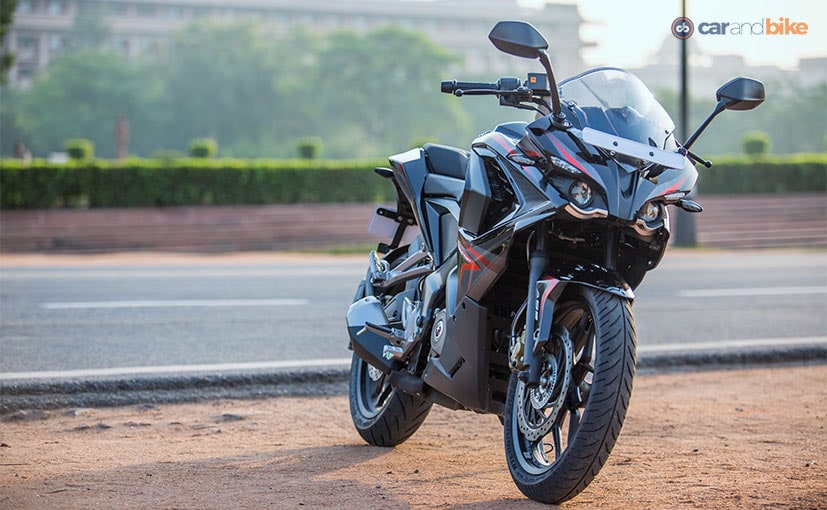 (Bajaj Pulsar RS 200)
(Bajaj Pulsar RS 200)The TVS Apache RTR 200 sticks to a minimalist theme for the design. Those who are TVS enthusiasts enough will be able to relate with the fact that the Apache RTR 200 is in fact the production form of the Draken X-21 concept that was showcased at the 2014 Auto Expo by TVS. And it's a very good thing! The naked streetfighter styling is aggressive and gives the Apache RTR 200 a lean-mean look. The sculpted tank and the beautifully designed headlamp add solid muscle to the bike as well.
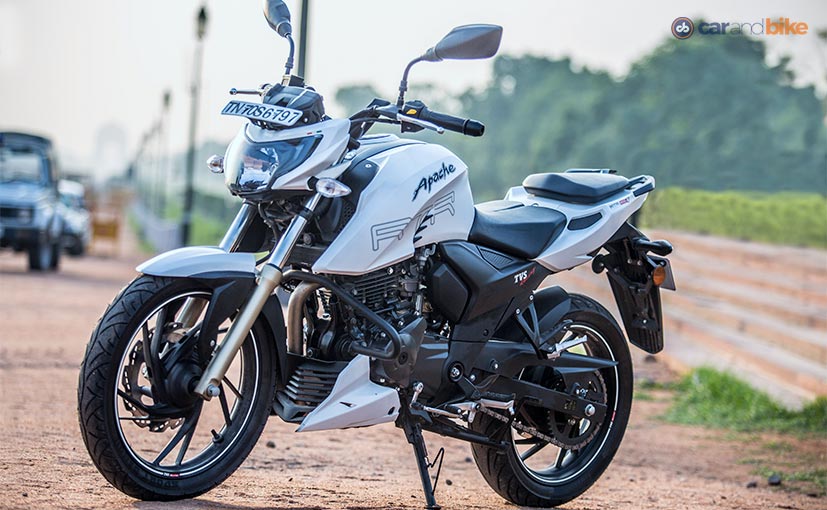 (TVS Apache RTR 200 4V)
(TVS Apache RTR 200 4V)Features Galore
Both Bajaj and TVS have loaded these 200cc motorcycles with a variety of features. The Apache RTR 200 gets an all digital instrument console while the Pulsar RS 200 gets a part analogue part digital console. The Pulsar RS 200 gets a blue-lit while the Apache RTR 200 gets a white-lit. Both are easy to read on the move, with the IP on the Apache offering more information and more modes to measure acceleration, lap times and top speed.
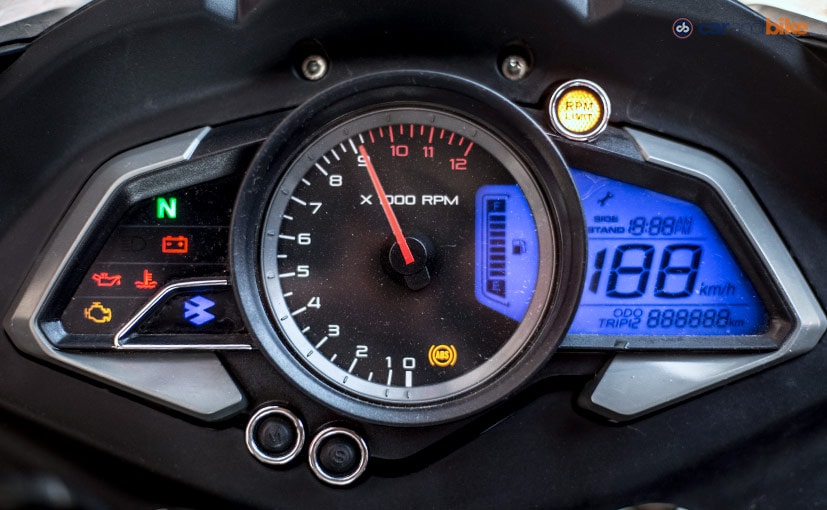 (Bajaj Pulsar RS 200 Instrument Panel)
(Bajaj Pulsar RS 200 Instrument Panel)The switchgear on the Pulsar RS 200 is backlit, making it easier to operate during the night. Both motorcycles also feature DRLs upfront. Bajaj has also fitted the Pulsar with a Bosch single-channel ABS unit that links up with the front brake but more on that later. It is great to see that both the motorcycles have good fit and finish.
 (TVS Apache RTR 200 4V Instrument Panel)
(TVS Apache RTR 200 4V Instrument Panel)There are no parts which stick out or look out of place. The quality of plastic on the switchgear on the Apache 200 RTR could have been a shade better though.
Gentlemen, start your engines!
Thumb the starter and you can immediately discern that the Apache RTR 200 has a meatier exhaust note. The RS 200 has a gruff engine noise that sounds similar to the KTM Duke 200. Straightaway to the engines then! The Pulsar RS 200 is the more powerful bike here with a 199.5cc engine that produces 24.4bhp@9,750rpm and 18.6Nm@8,000rpm while the Apache RTR 200 churns out 20.5bhp@8,500rpm and 18.1Nm@7,000rpm. This means that neither bike is a slouch. Both the engines have different characteristics.
 (TVS Apache RTR 200 4V Side Profile)
(TVS Apache RTR 200 4V Side Profile)TVS says that it has tuned the engine to provide a solid grunt in the mid-range and there is no denying this. The punch on the Apache RTR 200 between 30-80kmph is really, really sweet. The engine is smooth and there are hardly any vibrations felt on the footpegs and the handlebars. The top end though is where it loses steam. And this is where the Pulsar RS 200 takes the cake. The engine on the Bajaj loves being revved. Also, the clutch feel is lighter than on the Apache RTR 200. The TVS gets a 5-speed gearbox while the Bajaj has an extra cog. Gearshifts are smooth and there is no fuss involved although, we did manage to find false neutrals on a couple of occasions on the RS 200. It definitely accelerates faster and has a higher top-end. Also, it is more involving to ride.
On the move
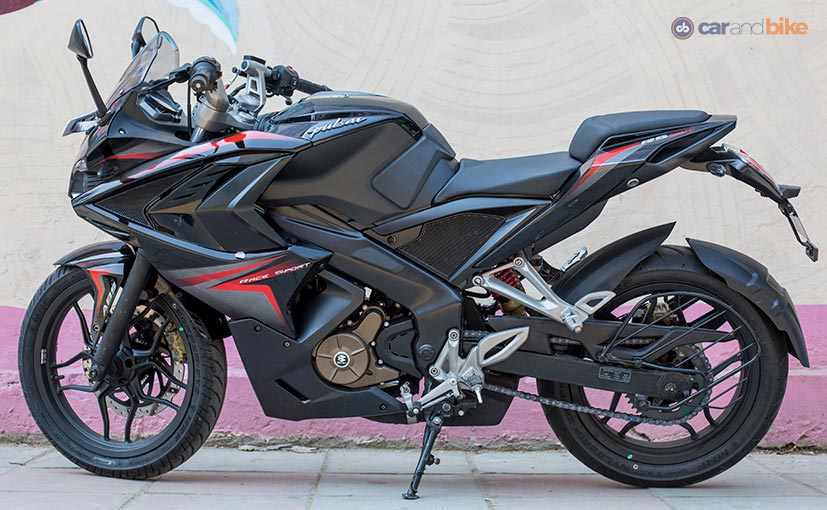 (Bajaj Pulsar RS 200 Side Profile)
(Bajaj Pulsar RS 200 Side Profile)Both the Bajaj and the TVS are matched evenly when it comes to handling. Filtering through city traffic is a breeze. Around corners too the pair feels neutral and there is little drama. Scraping pegs is an easy task. The Apache RTR 200 is shod with Pirelli Sport Demon while the Pulsar RS 200 wears MRF soft-grip rubbers. The grip generated is more than enough on both but the Pirellis give you that extra sense of confidence while cornering and braking hard. The suspension is a tad stiffer on the TVS therefore the ride quality too is stiff.
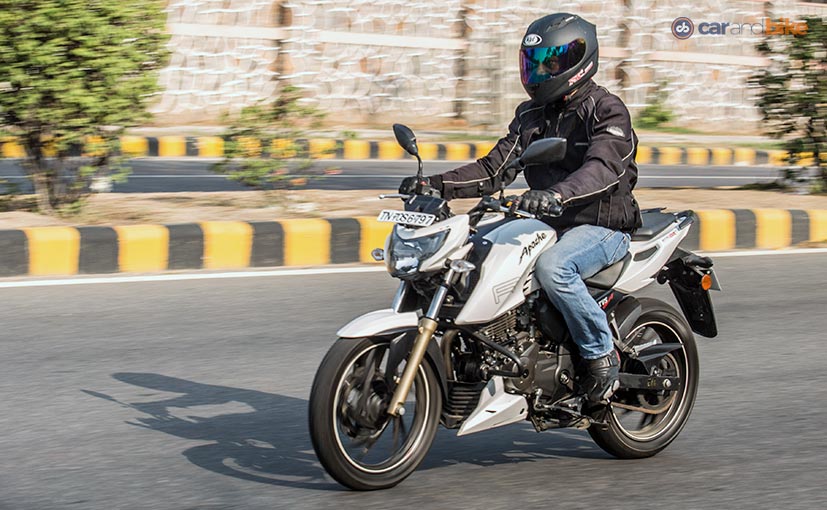 (TVS Apache RTR 200 4V)
(TVS Apache RTR 200 4V)The Pulsar gets a balanced suspension that irons out irregularities on the road effectively. The riding position is more committed on the RS 200 and the seat too is firm. The Apache has a more upright seating position and the seat is kinder to your bum on long rides.
Braking is yet another aspect where both these motorcycles are evenly matched. The Pulsar gets a single channel ABS on the front end. There is less progression though. The bite comes in at once. Not that it is a bad thing but might take some time getting used to. TVS is already working on the ABS equipped model of the Apache RTR 200 and we are told that it will happen soon. The brakes though are progressive and have a solid bite. Stopping distanced on both of them are short and both the motorcycles hold their line well under hard braking.
 (Bajaj Pulsar RS 200)
(Bajaj Pulsar RS 200)So which one's better?
Entry-level performance bikes are dangerous waters to tread on. Manufacturers have to perfect the balance between practicality and sportiness without compromising on either. The Apache RTR 200's solid mid-range grunt is perhaps its biggest asset while the RS 200 takes the cake when it comes to sheer performance. It is a very tough ask to pick a clear winner in this road test because these two motorcycles are so evenly matched that it boils down to a personal choice. If you want to grab attention and want a more involving bike to ride, then it is the Pulsar RS 200 you should put your money on. If minimalism is your thing and you wouldn't want to spend few extra bucks then the Apache RTR 200 works just as fine. Bottom-line being, you won't be disappointed with either of them. The prices for the Pulsar RS 200 start from Rs. 1,20,000 while the Apache RTR
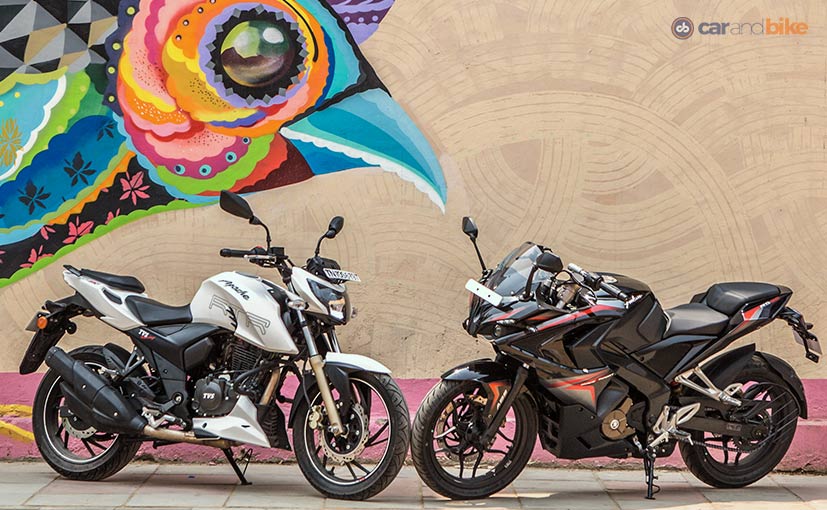 (Bajaj Pulsar RS 200 vs TVS Apache RTR 200 4V)
(Bajaj Pulsar RS 200 vs TVS Apache RTR 200 4V)200 range starts from Rs. 88,000 and goes up to Rs. 1,07,000. The reason being the Apache RTR gets multiple variants starting from the very basic that has a carburetted engine, TVS tyres and no ABS and going up to the fully loaded variant that features a fuel-injected engine, Pirelli tyres and ABS as well.
(All prices are ex-showroom, Delhi)
(Disclaimer: The TVS Apache RTR 200 with a carburettor has been used only for photography purposes)
Last Updated on June 25, 2016
Latest News
Popular Bajaj Models
- Home
- News
- Two Wheelers
- Comparison Review: Bajaj Pulsar RS 200 vs TVS Apache RTR 200 4V















